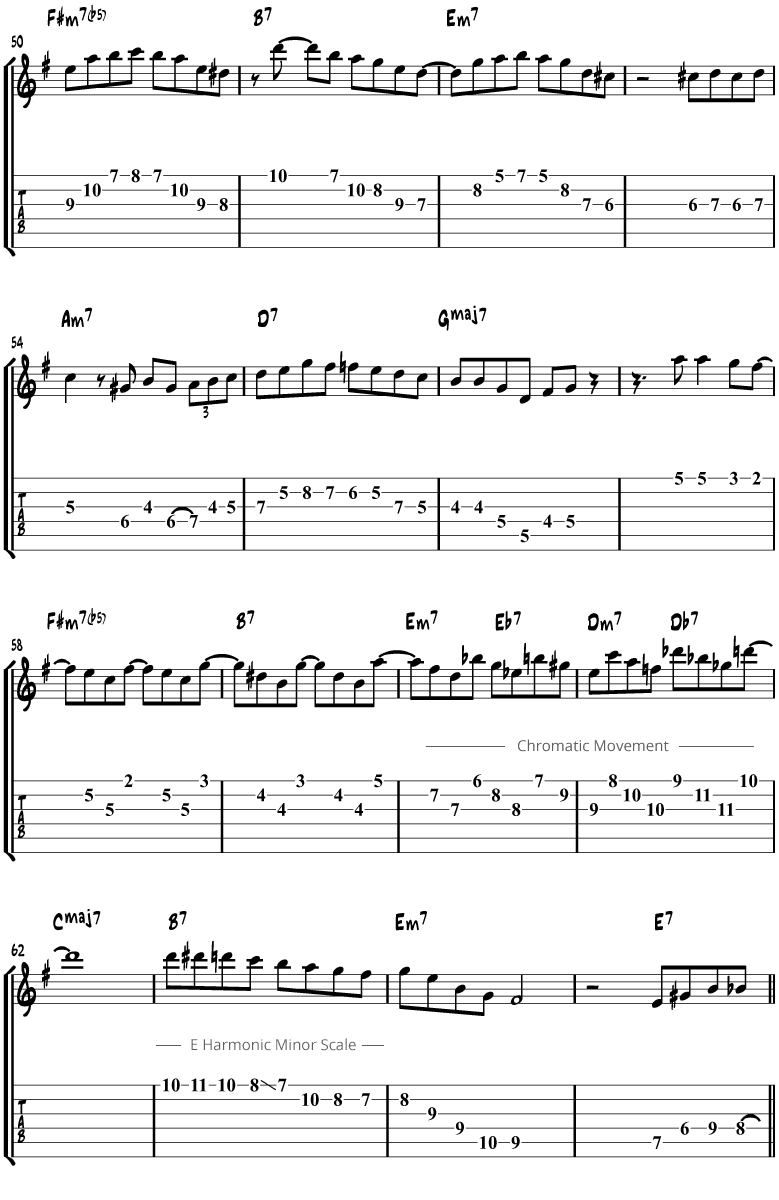Breaking News
Autumn Leaves Solo Guitar Pdf Tabs
пятница 11 января admin 34
• • • Autumn Leaves is one of the most popular jazz standards on record and is a must-know tune for any jazz guitarist. Because of this, having a strong hold on the melody and improvising is essential learning. While other instruments, such as sax, trumpet, and vocals, often play the melody on a gig, you never know when you’ll be called up to play the head in or out of a tune.  In this lesson, you will learn to play the melody of Autumn Leaves, combined with chords to fill up the gaps.
In this lesson, you will learn to play the melody of Autumn Leaves, combined with chords to fill up the gaps.
Next, you will learn a guitar solo over the chords of Autumn Leaves, and the scales needed to play that solo. Learning the melody is an important part of studying any jazz standard. Even if you are excited to dive into the solo, take the time to learn the melody, it builds a strong foundation of the form and tune in your ears and fingers that will make soloing easier over these changes. Have fun learning this Autumn Leaves melody and solo. Study it over the backing track, incorporate licks and ideas from the solo into your own playing, and dig into one of the most famous jazz tunes in the repertoire. Autumn Leaves Scales Jazz guitar scales are an important tool for improvisation and essential learning for every jazz guitar player.
In this section, we will have a look at the needed to solo over Autumn Leaves. There are other scale options besides the ones on this page, but in this lesson, we’ll stick to the basics. G Major Scale You can get away with playing over the entire chord changes of Autumn Leaves with just one scale, the G major scale (aka G ), although there’s a great chance you’ll sound boring after a while. That’s why you will learn to combine the G major scale with other scales.
Here are the notes of the G major scale: G Major Scale G A B C D E F# 1 2 3 4 5 6 7 Here are the notes of the G major scale mapped on the entire fretboard: If the major scale is new to you, start with this position: E Minor Blues Scale Another scale that you can use over the entire chord changes of Autumn Leaves is the E. The minor blues scale is almost the same as the but has one more note, called a blue note (#4 or b5). E Minor Blues Scale E G A A# B D 1 b3 4 #4 5 b7 Here is a common fingering for the E minor blues scale (the blue note is colored blue!): To bring variety to your solos and sound interesting to your listeners, you’re going to need some other scales as well. The Harmonic Minor Scale The most common scale of choice to play over dominant 7 chords that go to a minor chord is the. There are two dominant chords like this in the chord changes of Autumn Leaves, B7 and E7: • Play E harmonic minor over B7 (goes to Em7) • Play A harmonic minor over E7 (goes to Am7) Here are the notes of the E harmonic minor scale: E Harmonic Minor Scale E F# G A B C D# Played over B7 11 5 13 b7 1 b9 3 And here is a common position of the E harmonic minor scale: Autumn Leaves Backing Track Here is the backing track for this lesson.
Free Nokia 7230 mobile phone games from MobileRated. Download free wallpapers, games, videos and more for phones and tablets. Nokia 7230 whatsapp messenger download. Download games and other mobile. At mob you can download thousands of Nokia 7230 games for free. Huge selection of free java games for Nokia 7230.
Great Job Dirk, with this now legendary song. I regret abandoning to the rubbish bin, all the old original London U.K.
1940’s -1950’s band sheets I once had which included this and many of the old hits complete with guitar chords etc. They would have been something I could share with you as well as them likely to have been worth a packet of money today! The pages used were half A4 in size and I used to wonder at how those in the band could see them to read them when actually playing.
Playing Changes by Using Chords Arpeggios. 5 - Autumn Leaves Solo that based on Arpeggio Etude with chords tensions and extensions, modes and passing tones.
I was young and ignorant of music then and had no idea what I was denying myself for the future! To top it all, the beautiful Hofner Committee guitar inlaid with Mother of Pearl fretboard markers, which I bought in the 1960’s in London’s West End music shops enclave, suffered the indignity of a broken neck when I inadvertently left it on the double bed in our caravan while travelling! It was damaged beyond economical repair and today would have been worth a great deal as a collectors item if I still had it. I still have the one 1969 colour photo of myself and my duo singing partner Chris Bird showing me holding my Hofner Committee and Chris holding the Hofner Beatle guitar with closely matching colour and adornments which I bought in Sydney Australia, and taught her to strum along to some of our songs with.
